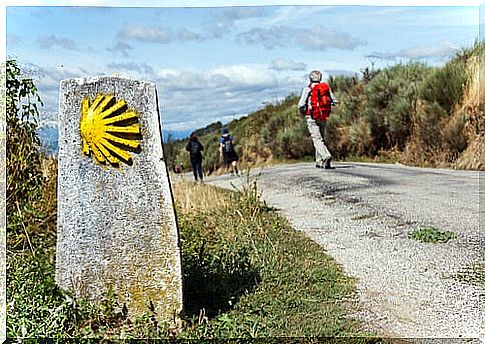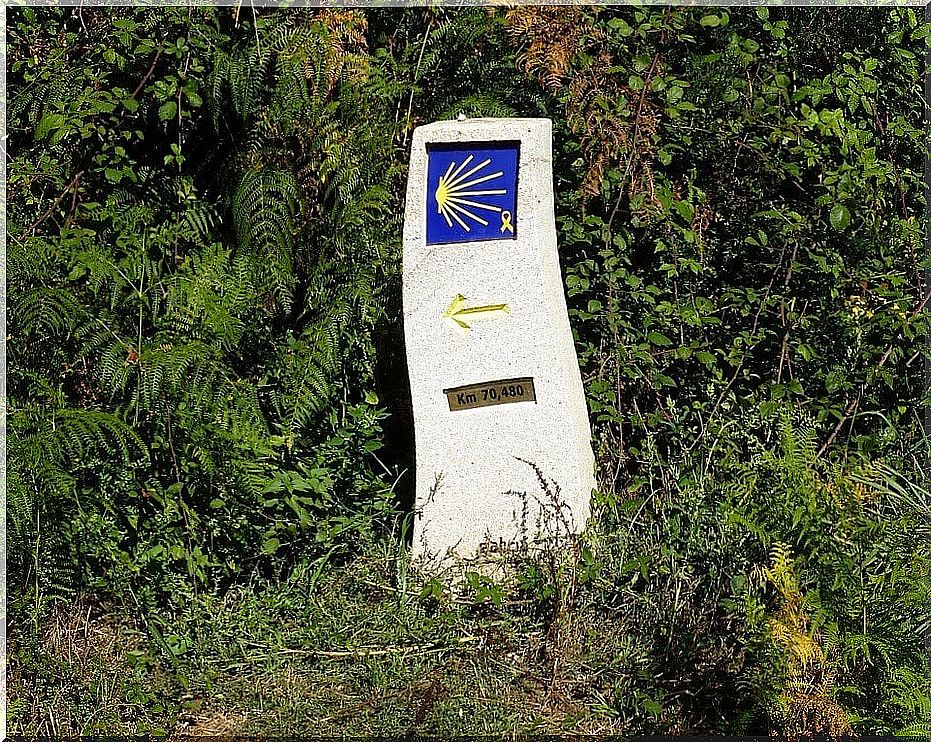The Camino De Santiago And The Fusion Of Identity

Get up before dawn. Stretch out, wash your face, grab your cane and backpack, and walk until the sun comes up. Stop for breakfast and get back on the road. Stop to rest and walk again. This routine, day after day, is the one carried out by the pilgrims on the Camino de Santiago. Routine that, unsurprisingly, has health benefits. However, there are also other types of changes, such as psychological ones. Specifically, the fusion of identity.
A recent longitudinal study carried out by researchers from the University of Granada, Spain, and the University of Monterrey, in Mexico, relates the fusion of identity with the pilgrims on the Camino de Santiago. This study focuses on how pilgrims’ experiences influence their identity. Specifically, the study verifies how participation in the typical activities of the Camino de Santiago and the contact that is maintained with the other pilgrims once the journey is finished make the identity change.

The road to Santiago
The Camino de Santiago is a religious pilgrimage with more than 1,200 years of history. Formerly, the pilgrims traveled different paths until they reached Santiago de Compostela, where they worshiped the supposed remains of the Apostle Santiago.
At present, religious motivation is shared with others such as spiritual, cultural or sports. Likewise, the roads are better regulated, signposted and well-off. So much so, that around 300,000 pilgrims travel the different roads each year to reach Santiago.
The pilgrimage of the Camino de Santiago becomes a ritual. During the way, the pilgrims carry out typical behaviors, such as leaving stones on the milestones that indicate the way, carrying typical symbols such as the scallop or carrying the typical wooden staff or walking stick. In the same way, extreme feelings are also typical of this pilgrimage. Having moments of euphoria at the end of the stage or the excruciating pain after long hours of walking in the sun.
The fusion of identity
Social identity is the importance we attribute to belonging to a group, in this case the pilgrims. This importance makes our personal identity defined in terms of the group.
If our group, compared to others, gets a positive evaluation, our self-esteem will grow. However, when our social identity is very strong, personal identity is diluted and the norms and the role that we occupy in the group will be the one that guides the behavior.
In contrast, identity fusion is a visceral feeling of unity with the group. People who have this feeling have stronger relationships with other members of the group. Which, in turn, encourages the merged people to do for the group what they would do for themselves. But, at the same time, personal relationships with group members are also strengthened.
This fusion of identity occurs when personal and social identity become permeable. In this way, when our personal identity is compromised, for example when we feel humiliated, we will perceive that the threat also occurs in our group. Consequently, the actions that will arise as a result of this humiliation will be aimed at improving the status of the group and other members, and not just our self-esteem.

How identity fusion is maintained
In the study carried out by Lobato and Sainz, the team members traveled to Santiago de Compostela. In the Plaza del Obradoiro, where the Cathedral of Santiago is located, they collected surveys of the pilgrims who were arriving after making the pilgrimage. In these questionnaires, the pilgrims answered different questions. For example, the degree of fusion of their identity with the pilgrims, the emotions they had felt and the number of pilgrims with whom they walked.
Three months after the last pilgrims responded, they were contacted again. On this occasion, the contact was via email and they were asked to carry out a small online survey. The survey questions were related to the degree of fusion of their identity, again, with the memories they kept and with the frequency with which they continued to maintain relationships with the pilgrims.
The results of the study indicated that, in general, those pilgrims who manage to fuse their identity, kept it fused three months later. However, those pilgrims who had participated in the typical rituals along the way and who continued to maintain contact with other pilgrims were more likely to remain fused.
Therefore, when making the journey it is important to participate in the different activities and rituals. Get fully involved and, of course, keep in touch with the friends you make along the way. These practices will serve to maintain the merged identities.









